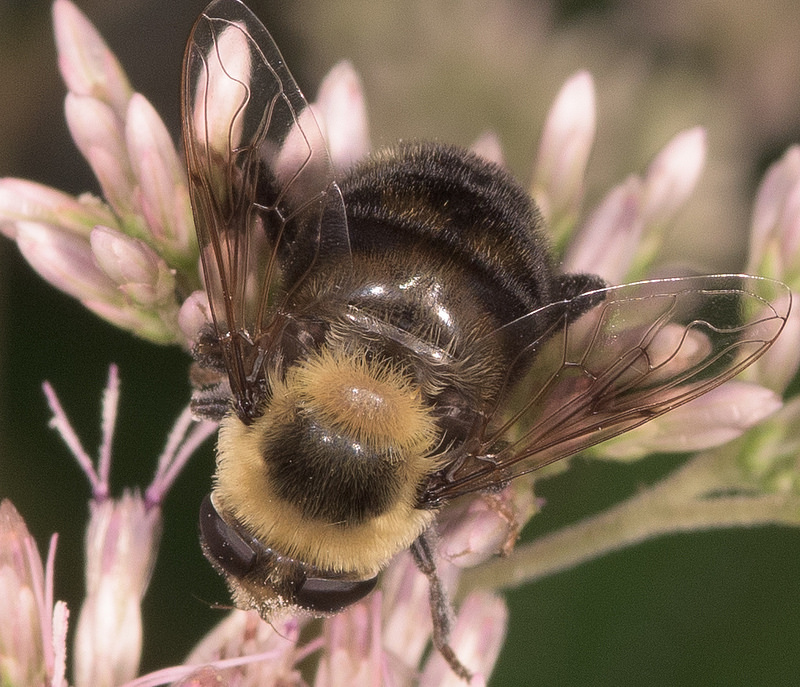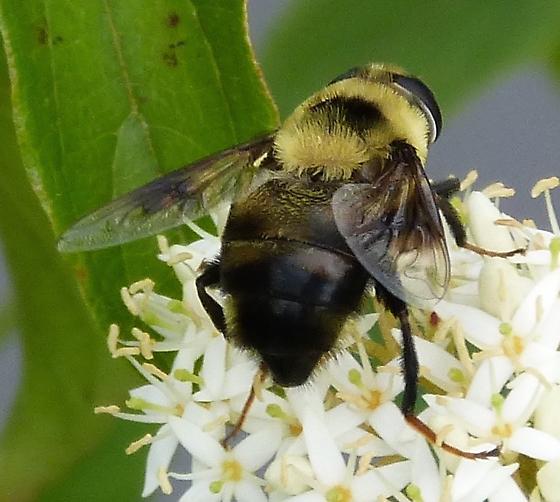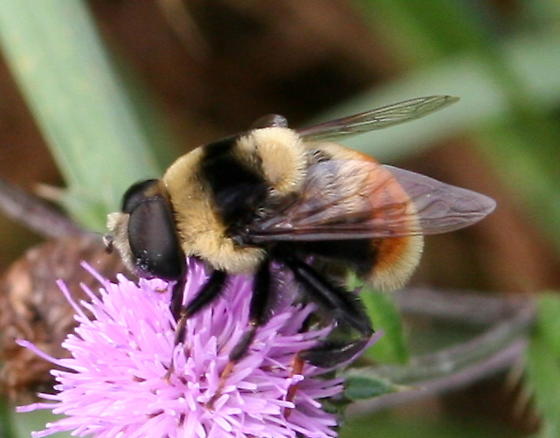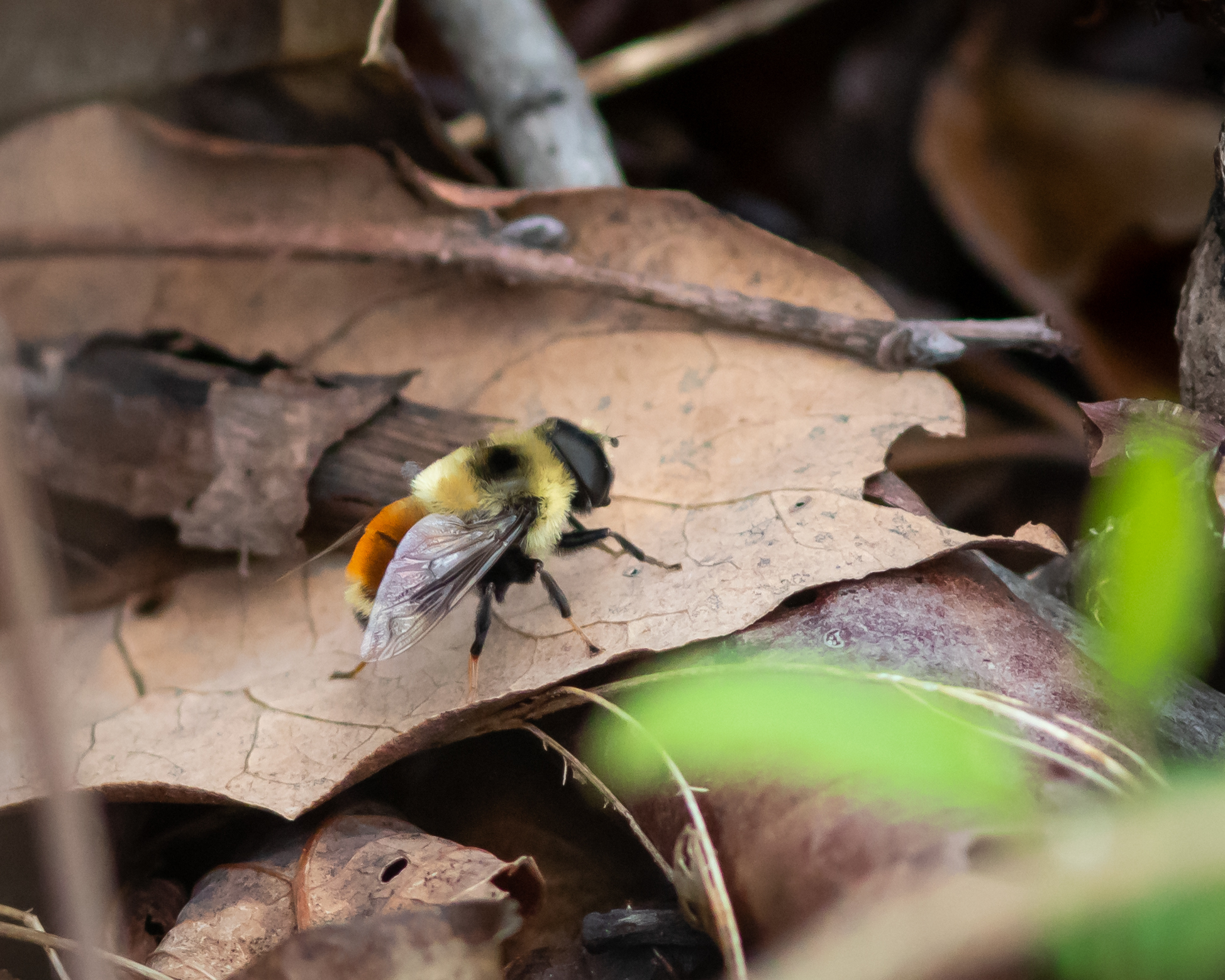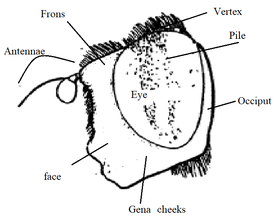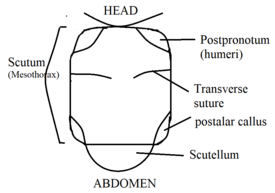Map Snapshot






7 Records
Seasonality Snapshot
Source: Wikipedia
| Eristalis flavipes | |
|---|---|

| |
| Female | |

| |
| Male | |
| Scientific classification | |
| Domain: | Eukaryota |
| Kingdom: | Animalia |
| Phylum: | Arthropoda |
| Class: | Insecta |
| Order: | Diptera |
| Family: | Syrphidae |
| Genus: | Eristalis |
| Species: | E. flavipes
|
| Binomial name | |
| Eristalis flavipes Walker, 1849
| |
| Synonyms | |
| |
Eristalis flavipes, the orange-legged drone fly, is a species of hoverfly native to North America.[1] It flies from early April to mid-October, and occurs in a wide variety of habitats, particularly wetlands. Hoverflies get their names from the ability to remain nearly motionless while in flight. The adults are also known as flower flies for they are commonly found around and on flowers, from which they get both energy-giving nectar and protein-rich pollen. The larvae are aquatic filter-feeders of the rat-tailed type.[1]
Description
[edit]Eristalis flavipes strongly resembles a bumblebee.
For terms see Morphology of Diptera.
It is 13 to 17 mm long.
- Head
The face, cheeks (gena) and facial stripe are shining black with short yellow pile. The antennae are dark brown and plumose basally. The eyes are broadly contiguous in the male, with eye pile confined mostly to a vertical stripe.
- Thorax
The mesonotum, pleurae, and scutellum, with very abundant, long, bright yellow pile over shining black except the center of the nearly hairless mesonotum. The scutellum is wholly light yellow.
- Abdomen
The abdomen is a deep shining black with the second segment dark red and covered with long black hairs with some yellow hairs intermixed.
- Wings
The wings are hyaline with luteous veins. The female has a large brown spot at the central part of wing. The wing veination: includes a sinuous r4+5 vein, a closed cell r1. The anterior cross- vein (r-m) is oblique and near the middle of discal cell (dm).
- Legs
The legs are deep black, with black pile. Joints are reddish the anterior tarsi are brown, the middle and posterior tarsi are light reddish-yellow. The hind femora are somewhat elongate. The hind tibiae are bent. [2][3]
-
Eristalis wing
-
Insect leg
-
Eristalis head
-
Syrphid antenna
-
Dorsal view of Syrphid thorax
References
[edit]- ^ a b Skevington, Jeffrey H.; Locke, Michelle M.; Young, Andrew D.; Moran, Kevin; Crins, William J.; Marshall, Stephen A. (2019). Field Guide to the Flower Flies of Northeastern North America. Princeton, New Jersey: Princeton University Press. ISBN 9780691189406.
- ^ Williston, S.W. (1887). "Synopsis of the North American Syrphidae". Bulletin of the United States National Museum. 31: 1–335.
- ^ Hull, Frank Montgomery (1925). "A Review of the Genus Eristalis Latreille in North America". The Ohio Journal of Science. 25: 11–45. hdl:1811/2257.
 This article incorporates text from this source, which is in the public domain.
This article incorporates text from this source, which is in the public domain.
Further reading
[edit]- Ross H. Arnett (30 July 2000). American Insects: A Handbook of the Insects of America North of Mexico. CRC Press. ISBN 978-0-8493-0212-1.
- Eristalis (Diptera: Syrphidae) from America North of Mexico, Telford H.S. 1970. Ann. Ent. Soc. Am. 63(5): 1201–1210.
External links
[edit]- "Diptera.info". diptera.info. Retrieved 15 January 2018.
- "NCBI Taxonomy Browser, Eristalis flavipes". ncbi.nlm.nih.gov. Retrieved 15 January 2018.
